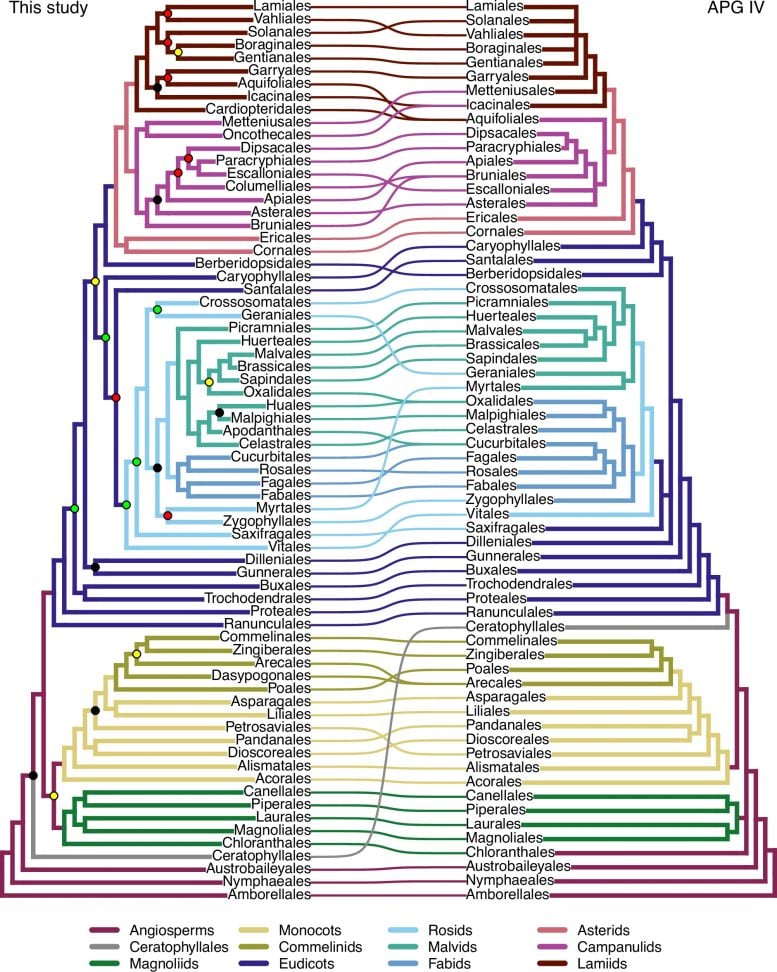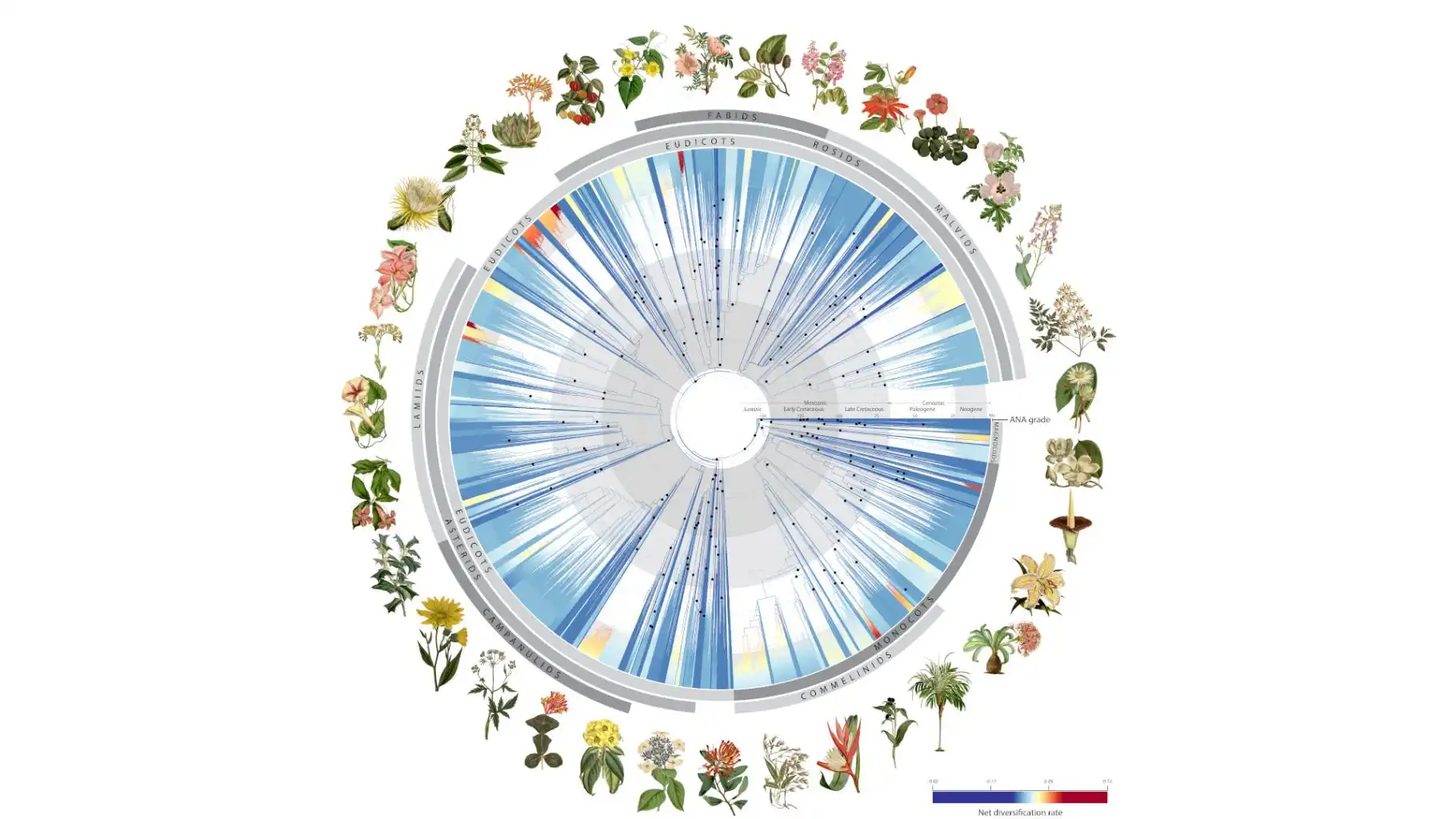
Scientists from around the world have collaborated to create a comprehensive DNA tree of life for flowering plants. This groundbreaking project, which includes data from over 9,500 species and almost 8,000 genera, has provided new insights into plant evolution and made the data freely available for research in various scientific fields.
The study was led by the Royal Botanic Gardens in Kew (United Kingdom) and involved researchers from institutions such as Heidelberg University, Kunming Institute of Botany (KIB) of the Chinese Academy of Sciences, and many others. The team used a combination of DNA sequencing technology and data from herbaria collections to build the tree.
The flowering plant tree of life is significant because it allows us to understand how different species are related to each other. By comparing DNA sequences between different species, researchers can identify changes (mutations) that accumulate over time, providing a molecular fossil record. This information can be used for identifying new species, refining plant classification, uncovering new medicinal compounds, and conserving plants in the face of climate change and biodiversity loss.
The tree of life also reveals important insights into plant evolution. For instance, researchers have found that more than 80 percent of major modern flowering plant lineages originated around 150 million years ago during the late Jurassic Period. This sudden burst of invention was marked by a rapid diversification and adaptation to various environments.
The data from this project will be invaluable for future research, particularly in the fields of biodiversity and agriculture. It will help scientists better understand plant evolution, identify new species, and develop strategies for conserving plants that are threatened with extinction.








